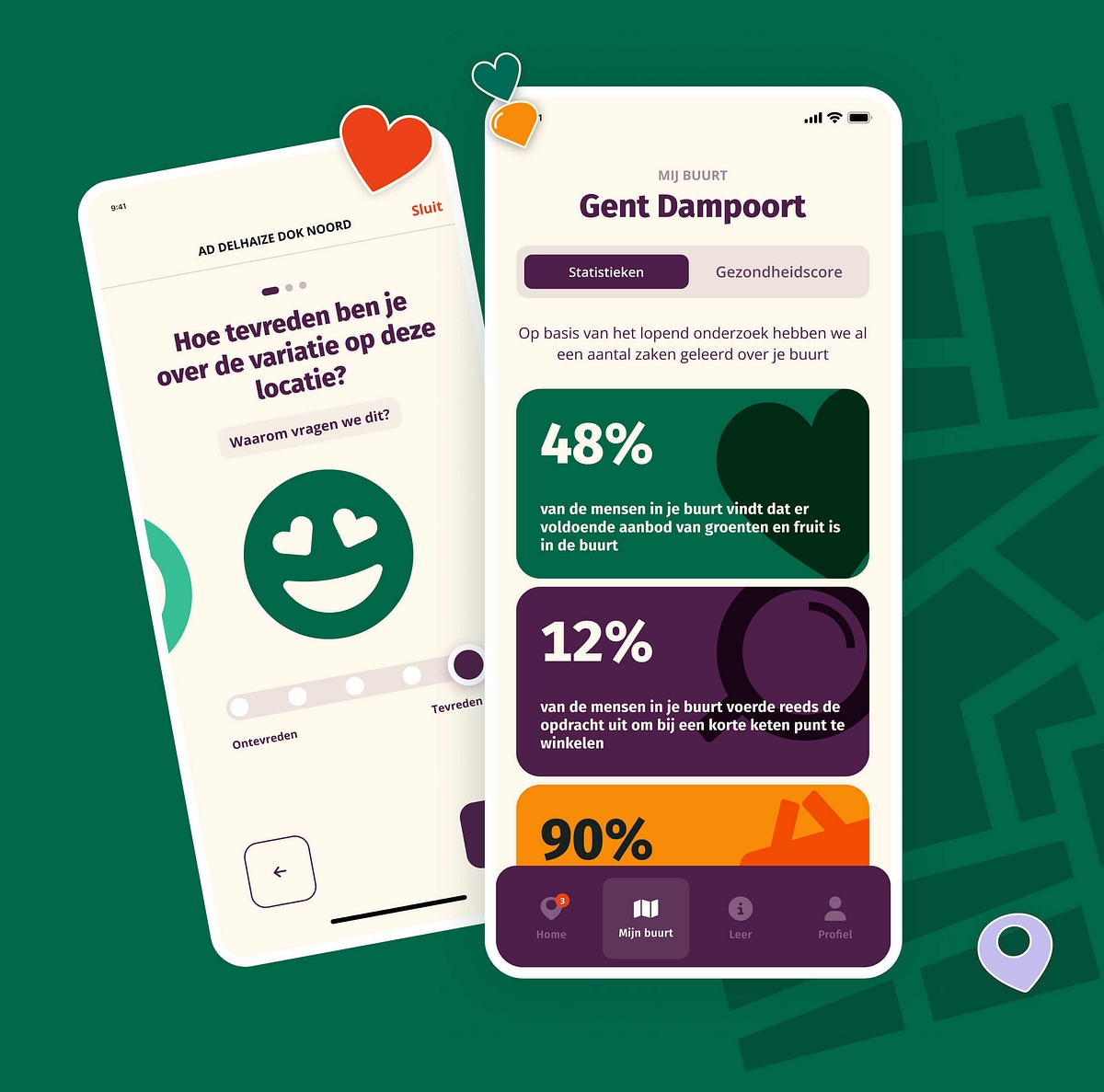
Making citizen science engaging & accessible
Sciensano

Making citizen science engaging & accessible

Sciensano
Context
Flanders' food landscape is changing—and not always for the better. In some areas, fresh, nutritious food is abundant. But in others, it's scarce or unaffordable.
Sciensano, the national health research institute, wanted to map these "food oases","food deserts" and "food swamps" across Flanders, analysing how citizens interact with over 70,000 food providers.
However, gathering this information posed a significant challenge. How could Sciensano motivate Flemish people to participate consistently in an eight-week research project?
Leap Forward created a comprehensive digital ecosystem to boost engagement and participation. We designed friendly, accessible branding, created a gamified app, and built a fresh website to generate awareness and educate citizens about the project’s goals.
Gallery
Gamifying public research
Traditional research methods treat participants as data sources. However, our app reframes them as collaborators in scientific discovery.
Every screen was designed with dual purposes: gather quality research data while providing value to the user. The neighbourhood map collects location evaluations while also helping users discover food options in their community. Meanwhile, questions about food affordability and variety don't just inform research, they help users reflect on their personal food environments and choices.
Gallery
Text block
The interface balances simplicity with engagement. Location evaluations use straightforward sliders that gather nuanced feedback without complexity. "How satisfied are you with the variety at this location?" can be answered in seconds, but provides valuable research insights when aggregated across thousands of participants.
Progress tracking serves both scientific and motivational purposes. Users can see exactly how many daily questions and location evaluations they've completed, creating transparency about both individual contribution and overall research progress.
This visibility helps maintain commitment throughout the eight-week study period. Turning what could feel like an endless survey into a finite journey with clear milestones.
Building trust through branding
Scientific research projects often look clinical and academic, but we took a different approach. The visual identity we created feels deliberately unlike a government research initiative. Warm colors replace clinical blues and whites. Friendly illustrations take precedence over data visualisations. Clear, conversational language replaces academic terminology.
This approach extends to every touchpoint. The logo combines food-related symbols in a colorful, accessible arrangement that communicates the project's focus without requiring explanation. The end result was a lightweight and accessiwble brand. This transformed what could have been perceived as a boring government study into something citizens would willingly engage with.
Gallery
From awareness to participation
The website serves as the critical first touchpoint in the user’s journey, turning curious visitors into committed participants. Clear, engaging content explains why food environments matter and how citizen participation helps map them across Flanders.
Gallery
Text block
This educational approach transforms what could be perceived as "just another survey app" into a meaningful community science initiative. Strategic partnerships amplified the website's reach. Collaboration with Het Nieuwsblad, Belgium’s second-largest newspaper, has brought mainstream media attention. Meanwhile, partnering with Hopplr, a platform that brings digital communities together, ensures the project reaches as many people as possible.
Gallery
Scroll gallery
Don't take our word for it
"Working with Leap Forward was pleasant and enlightening for us. As researchers, we work in a completely different way, so bringing those two worlds together was really interesting."

Stefanie Vandevijvere
Senior Scientist at Sciensano







